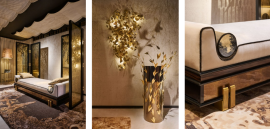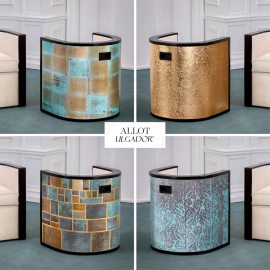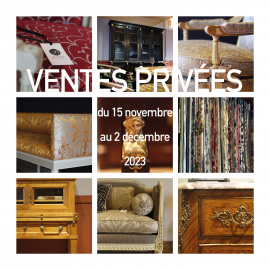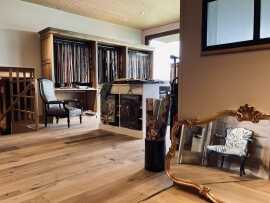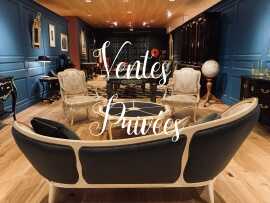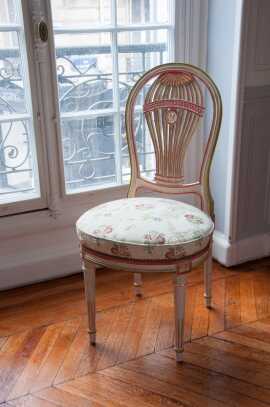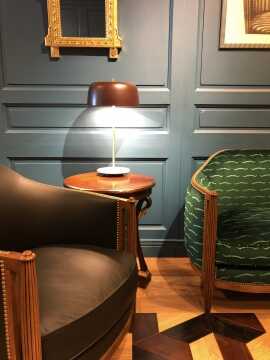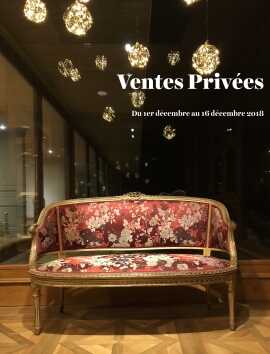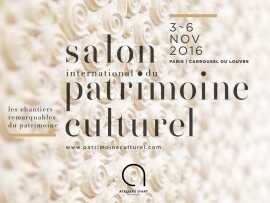History focus : Jean-Henri Riesener 25 February 2015
The master of Louis XVI furniture by the breadth and diversity of his work, by the exceptional quality of his products, the unparalleled splendor of the works ordered by the court, which he was, for more than a decade, the most important provider. Born in Gladbeck, north of Essen, Germany, he came young in Paris and got into the prestigious workshop of Jean-François Œben - cabinetmaker of the King at Arsenal. He became one of the main worker before the premature death of his master in 1763. Then, he became head of the company under the control of Françoise-Marguerite Vandercruse (LACROIX said), the widow of Œben. This promotion came with the hostility of his colleague Jean-François Leleu, who was running the same honor. Those cabinetmakers were in trouble several times before their separation.

Riesener does not stop there. In 1767, he married Françoise-Marguerite Œben and the following year obtained his master's letters. Now, He can stamp his own. Thus, he concludes, execute and deliver, in 1769, the famous office ordered for the king at Versailles (which was begun by Œben). Enjoying the reputation of the workshop, his business does well. In 1774, at the enthronement of Louis XVI, he Gille Joubert on the head of the Crown furniture department.
During about ten years, Riesene got many orders from the court, he will deliver the different royal residences – sovereigns, princes, Count and Countess, the Count of Artois, the Duke of Orleans, King's aunts -, an incredible amount of furniture representing spectacular amounts.
In 1776, his wife died, leaving a young son born a few monts after their marriage. This boy is Henry-François Riesener, the famous painter. In 1783, he got married but his second marriage did not bring him satisfaction. A this moment, his his business is also falling. Around 1785, he was gradually ousted from the Crown Furniture department. His furniture prices are to high but Riesener does not lost the favor with the Queen – Marie-Antoinette -, who continues to send him orders for her apartment at Fontainebleau and Saint-Cloud.
When come the time of the French Revolution, many of his customers left France, and orders were stoped. Riesener does not seem unfriendly to the new regime. In 1793, with the painters Jean-Louis David and Hubert Robert, he is part an artist-expert commission in charge of snuff artworks seized from emigrants. During the Versailles furniture sales, he bought some furniture that he has previously delivered.
He plans to resell it. He was forced to replace the "feudal" emblems by purely decorative ones. He will close his workshop in 1801, having produced some Directoire style furniture, bear no comparison with his previous works.
Discover our furniture from Riesener :

Riesener does not stop there. In 1767, he married Françoise-Marguerite Œben and the following year obtained his master's letters. Now, He can stamp his own. Thus, he concludes, execute and deliver, in 1769, the famous office ordered for the king at Versailles (which was begun by Œben). Enjoying the reputation of the workshop, his business does well. In 1774, at the enthronement of Louis XVI, he Gille Joubert on the head of the Crown furniture department.
During about ten years, Riesene got many orders from the court, he will deliver the different royal residences – sovereigns, princes, Count and Countess, the Count of Artois, the Duke of Orleans, King's aunts -, an incredible amount of furniture representing spectacular amounts.
In 1776, his wife died, leaving a young son born a few monts after their marriage. This boy is Henry-François Riesener, the famous painter. In 1783, he got married but his second marriage did not bring him satisfaction. A this moment, his his business is also falling. Around 1785, he was gradually ousted from the Crown Furniture department. His furniture prices are to high but Riesener does not lost the favor with the Queen – Marie-Antoinette -, who continues to send him orders for her apartment at Fontainebleau and Saint-Cloud.
When come the time of the French Revolution, many of his customers left France, and orders were stoped. Riesener does not seem unfriendly to the new regime. In 1793, with the painters Jean-Louis David and Hubert Robert, he is part an artist-expert commission in charge of snuff artworks seized from emigrants. During the Versailles furniture sales, he bought some furniture that he has previously delivered.
He plans to resell it. He was forced to replace the "feudal" emblems by purely decorative ones. He will close his workshop in 1801, having produced some Directoire style furniture, bear no comparison with his previous works.
Discover our furniture from Riesener :
- Buffet: follow the link
- Sideboard: follow the link
- Chest of drawers : follow the link
- Desk : follow the link
Bibliography : "Les ébénistes français", d'Alexandre Pradère aux éditions Chêne
Toutes les actualités
Révélations : le rendez-vous des métiers d’Art et de la création internationale25 April 2019
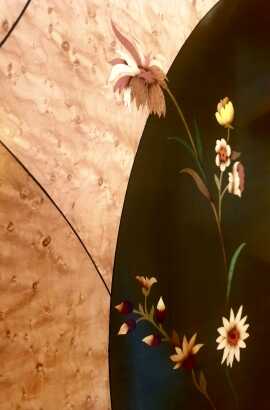
Les ateliers ALLOT à ICFF 201811 May 2018
Retrouvez en exclusivité les ateliers ALLOT au salon de NEW YORK : ICFF 2018. Des modèles inédits de l'élégance à la française vous serons proposés lors de ces 4 jours d'exposition.
Learn more

